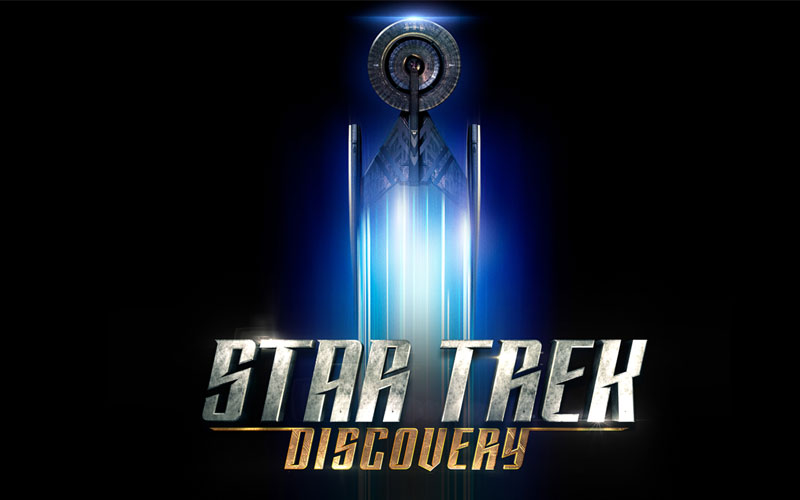 Now I know I am a little late to the party, but our household recently started a Netflix subscription (primarily because we has just finished Parks and Recreation from start to end) and Mrs Leese had seen clips of Brooklyn 99 on YouTube. Brooklyn 99 is only available through Netflix, so that was that - we subscribed to Netflix.
Now I know I am a little late to the party, but our household recently started a Netflix subscription (primarily because we has just finished Parks and Recreation from start to end) and Mrs Leese had seen clips of Brooklyn 99 on YouTube. Brooklyn 99 is only available through Netflix, so that was that - we subscribed to Netflix.An additional benefit is that Netflix streams Star Trek Discovery. It wasn't my idea to subscribe to Netflix, but I am not complaining!
Star Trek Discovery is the first new Star Trek series I've seen since Enterprise, and a lot has changed since then - 9/11, ISIS, the discovery of the Higgs Boson... it's a whole new world. Star Trek has kept pace with changes in sci fi TV visuals, in the same way as the rebooted films have presented the best of Hollywood's visual effects. But what about the audience? While Enterprise was airing in the UK, I was recording episodes on VHS video cassettes, so that I could watch episodes either live or at a time after their original air date. It took weeks and months to get through a series (season), and by the end of a season you could watch the series from end to end and better see the threads in the plot - if there were any. Star Trek was entirely episodic, so you knew everything would be back to normal by the end of the hour. In fact, season 3 of Enterprise (the Xindi arc) was widely criticised because it ran as a season-long arc and you couldn't just watch an episode in isolation (there were a few that could stand alone, but not many).
Now, with streaming services delivering on-demand TV 24/7/365, it's possible to watch Season 3 of Enterprise in a day. Not sure you'd want to, but the possibility exists.
Star Trek Discovery is able to balance the episodic nature of Star Trek with the demands of modern streaming audiences. The first two episodes are best viewed back-to-back, in the same way as TNG, DS9, Voyager and Enterprise all started with two-parters. There is a clear arc set up - the start and execution of the Klingon War - and then there are some serious differences. Observant viewers will notice that the series is called Star Trek Discovery, but the episodes start on the Shenzou. And the Captain is played by Special Guest Star Michelle Yeoh, who, as a Hollywood film actress is unlikely to be sticking around for the series. I predicted the destruction of the Shenzou with the captain on board before the opening credits had even finished.
Not that I'm complaining. The story shows us life in the Federation from the perspective of a mutinous officer who has only been saved from the brig and eventual court martial and expulsion by the needs of war. Star Trek hasn't had a criminal in the crew since Tom Paris was pardoned and allowed to join the Voyager crew, and Lt Suder fought his violent tendencies while trying to integrate into the same crew. This allows for some wonderful character interaction as the crew realise that they have Michael Burnham (famous mutineer) on board. Meeting the crew from Michael's perspective means that we're thrown into the middle of a fully integrated crew - there's no shakedown time.
 |
| The characters and names in this story are entirely fictitious. Any resemblance to any persons living or dead... |
 |
| ...is entirely coincidental. |
And there's a great balance between episodic and arcing TV. In episode five, Choose Your Pain, we meet Harry Mudd (who will go on to become a thorn in James T Kirk's side). By the end of the nearly wrapped episode, he's left to to rot in a Klingon prison, and that's a neat and tidy conclusion. But oh, no, he's back again in the standout episode seven, Magic to Make The Sanest Man Go Mad, and he wants revenge. Again we have another episode which reaches a firm conclusion, but now we're also wondering how long it will be before he'll be back again.
There are a few minor drawbacks to the way the story has been set up, the most noticeable being that as a prequel, we know how the story is going to end - there's no spore drive in Kirk's universe, so the ship is probably going to get destroyed eventually. I just hope it doesn't get erased from the timeline completely ("And Spock woke up and realised it was all a dream"? No thanks).
Otherwise, I am thoroughly enjoying the new series and can wholeheartedly recommend it.
I mean, it's good, but it's not as good as Star Trek: Picard; here are my episode reviews for the first season of Picard:
Episode 1: Remembrance
Episode 2: Maps and Legends
Episode 3: The End is the Beginning
Episode 4: Absolute Candour
Episode 5: Stardust City Rag
Episode 6: The Impossible Box
Episode 7: Nepenthe
Episode 8: Broken Pieces
No comments:
Post a Comment